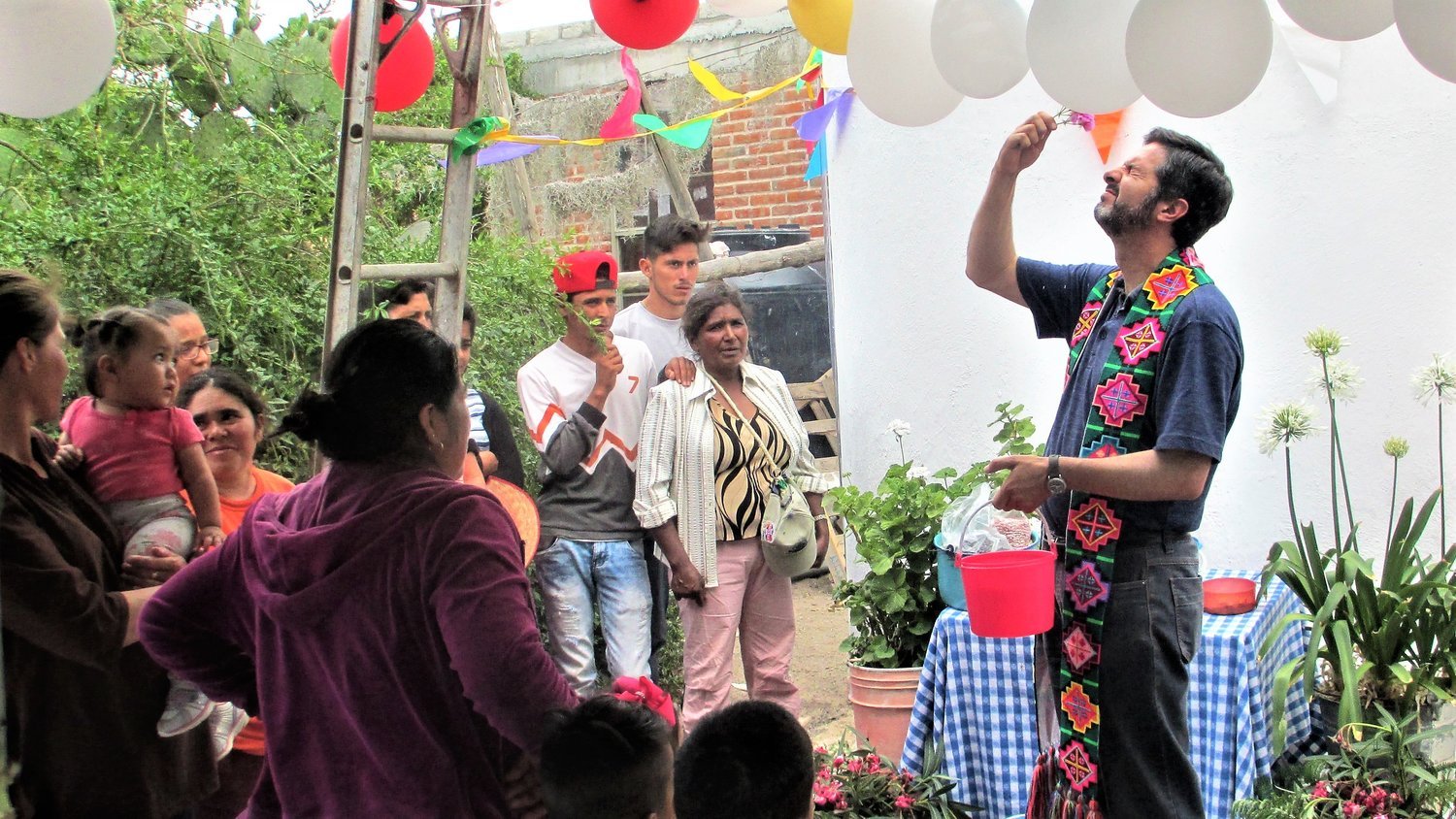July Campaign | Terreros de la Concepción
THE RAINY SEASON CAN PRODUCE ENOUGH CLEAN HEALTHY DRINKING WATER FOR COMMUNITIES AT RISK, ALL YEAR LONG - BUT ONLY IF WE CAN HARVEST IT
Back in 2013 we were asked to test the drinking water in Terreros de la Concepción (Terreros), a community in the municipality of San Luis de la Paz, for the first time. What we found was a single well, serving Terreros and five other nearby communities, that produced some of the highest levels of arsenic contamination we had ever seen at the time, roughly 6 and 7 times what the World Health Organization considers acceptable for human consumption for arsenic and fluoride respectively. These communities are only an hour’s drive from San Miguel.
What this means, is that all of the residents of these six communities are at serious risk for the development of childhood development issues, chronic kidney disease, and numerous cancers that are associated with arsenic and fluorides.
Delivering bad news to the residents of Terreros was very difficult. But what made it harder was that there was a reverse osmosis treatment plant in their community producing safe bottled water for profit. An option very few residents could afford on a regular basis and for those in the upper part of the community it’s difficult to carry the heavy garrafones (20-liter bottles) up the steep hills to their homes.
Luckily the residents of Terreros were able to team up with “CUVAPAS”, an important Caminos collaborator and a committed Catholic grassroots organization that assists rural communities to organize to address their water crisis and other needs.
It took far too long and, sadly, some of the health threats became all to real. CUVAPAS, led by a council of local women community leaders and closely supported by the indomitable Father Zesati, and Terreros organized into a highly motivated community force.
Together, we developed a rainwater harvesting plan, found the financing, and constructed three large scale rainwater harvesting systems that provide clean drinking water year round for the 15 families located in the upper part of the community.
While the construction of the rainwater harvesting cisterns at Terreros was one of the most satisfying moments we’ve ever had, they only provide safe drinking water for less than half of the community’s families. We need to finish the job in Terreros and in so many other local communities!
Why is our water contaminated?
It hasn’t always been easy, but for many years, with hard work and careful planning ,enough clean water could be found from streams and wells to sustain healthy lives in the semi-arid environment of Guanajuato State.
However, starting in the 1980s, an agricultural boom began with the growing and exportation of broccoli and lettuce. These water hungry crops demand so much that our water table is declining two meters or more each year. This has caused natural occurring arsenic and fluoride to mix into our water. This is happening throughout the area served by the Alto Río Laja Aquifer and is impacting more than 680,00 people including the entire San Miguel de Allende municipality. The longer many people drink this water, the more they are at risk for a host of serious health threats.
What can be done about it?
Caminos de Agua exists to determine exactly what the risks are in communities from the cobblestoned streets of San Miguel to the earthen backroads of Terreros de la Concepción, to help them organize to do something about it, and then to design, implement, and track the customized solutions we install together.
The export agriculture industry is getting bigger all the time, the water test results are getting worse, and the health threats are more frequently turning into a reality. So, we must gear up to do more work. The hard truth is that the biggest limitation of how many communities we can help is how much money we can raise.


